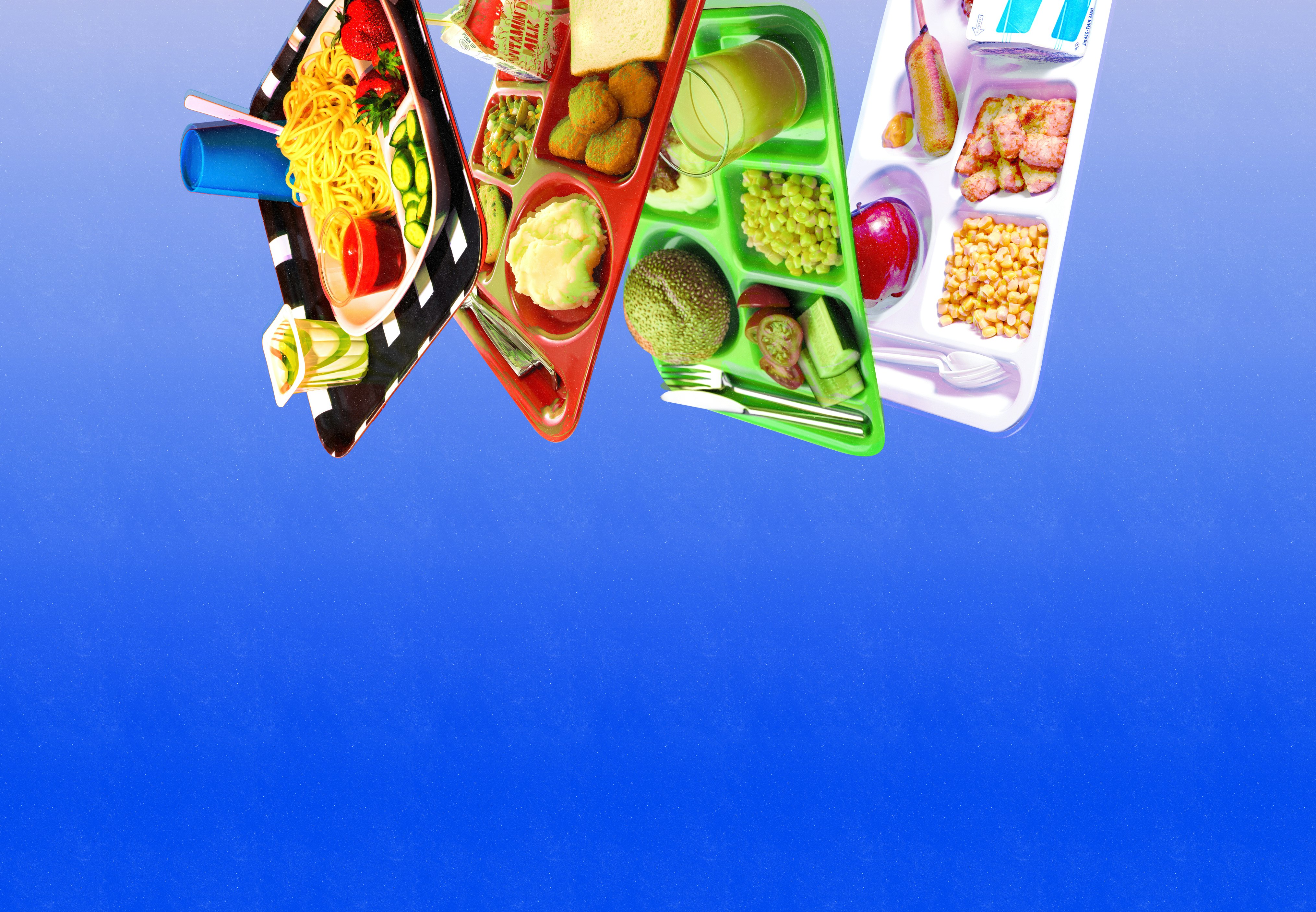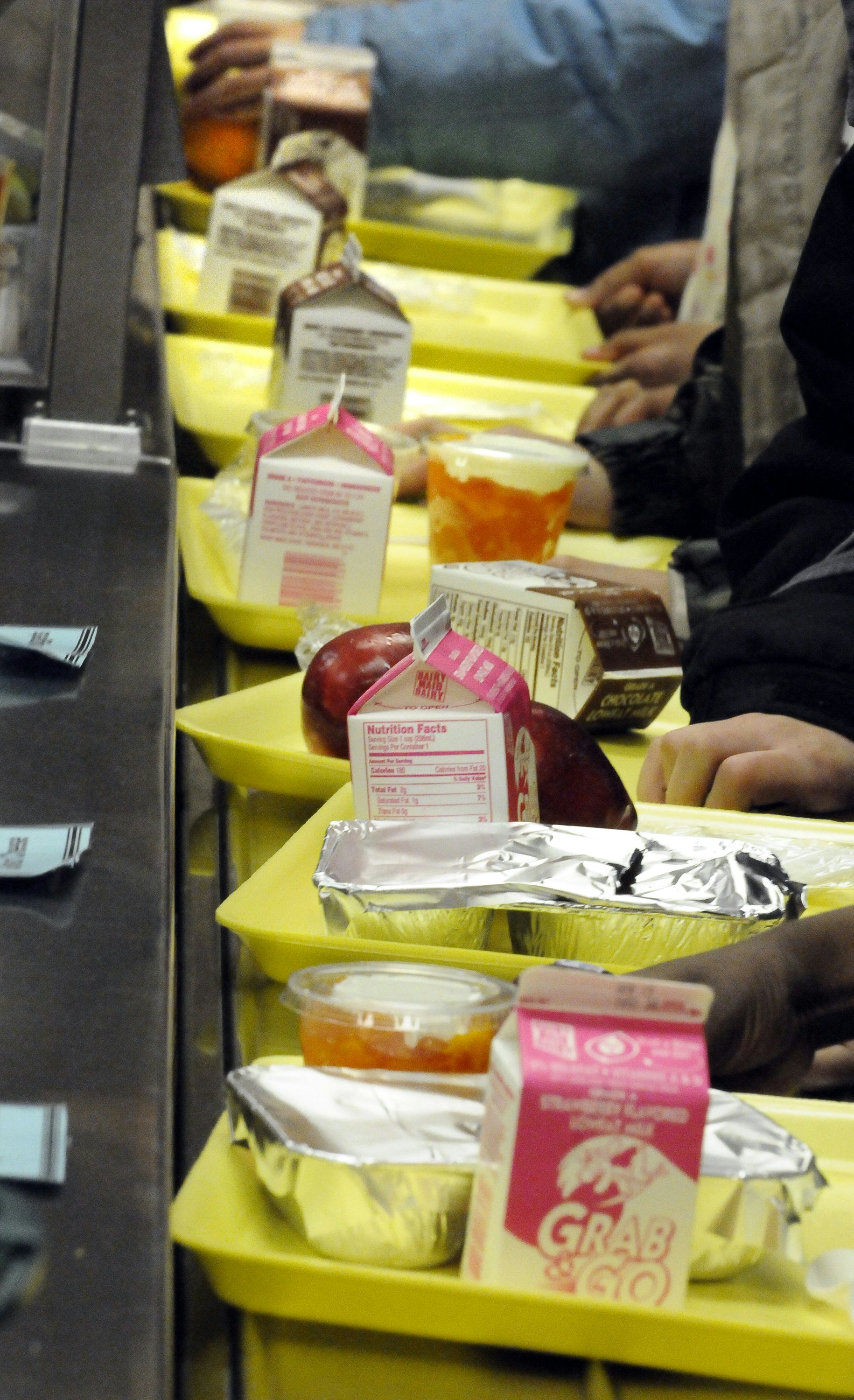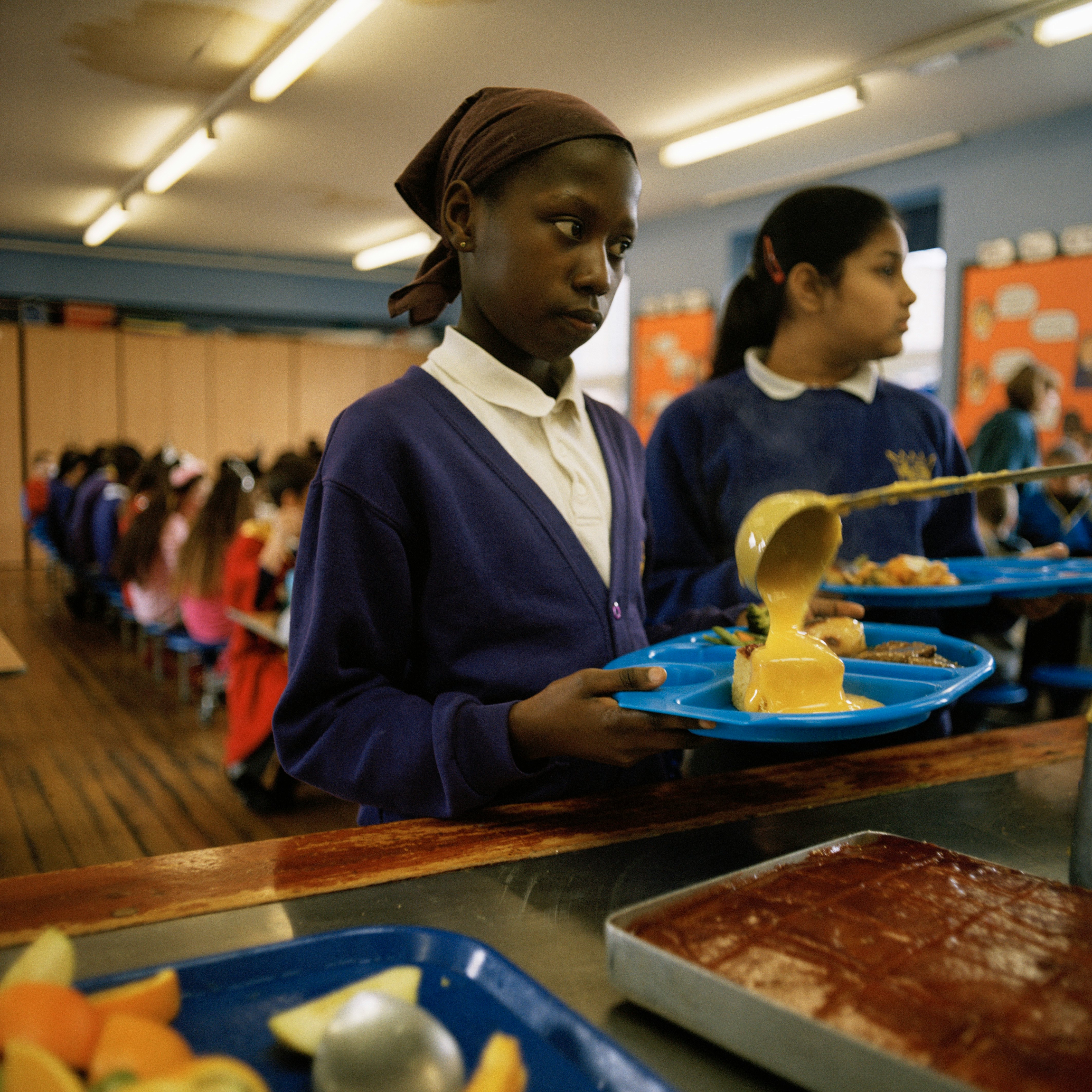
In January 2019, students at Lovin Elementary School in Lawrenceville, Georgia, took a hard look at how much food they were throwing away. It was Taco Day, and as lunch period wrapped up, teacher Gerin Hennebaul and a group of students sorted the milk, fruit, vegetables, and other foods left on the cafeteria trays into buckets. “It really left an impact on the kids," Hennebaul says. "They were shocked."
The students weighed the waste and found that that day's lunch, served to 721 kids, generated nearly 600 pounds of food waste. About 75 pounds of it was fruits and vegetables, and 120 pounds was still edible: unopened milk cartons, bags of baby carrots and sliced apples.
With more than 95,000 schools across the country serving lunch each day, that waste adds up. About 530,000 tons of food and 45 million gallons of milk is wasted in U.S. school cafeterias each year, the World Wildlife Fund estimates, which translates into about $1.7 billion worth of uneaten food.
Dumping food in landfills releases methane, a greenhouse gas more potent than carbon dioxide. And wasting food indirectly drives extinction; agriculture is the leading cause of biodiversity loss around the world — converting wild lands to cropland, diverting or polluting rivers and lakes, and pesticide use destroys habitats that wildlife need to survive. To tackle the environmental toll of landfilling all that food, environmental groups, like the World Wildlife Fund, have been working for about a decade with nearly 250 schools nationwide, including Lovin Elementary, to reduce waste but also to educate kids about the broader connection between the food they eat and issues like climate change and biodiversity loss.
As Pete Pearson, the WWF's senior director of food loss and waste, explains, making the cafeteria a classroom helps reduce waste now, and hopefully will produce a generation that's more environmentally responsible than their parents. "When you get a school that is saying, 'Hey, let's take a look at our cafeteria, let's understand the connection of food to the environment,’ then students start asking questions," he says.
Efforts to address food waste at the federal level have been less aggressive — but there are signs that’s starting to change. The U.S. has committed to halving the nation's food waste by 2030. In December, the Biden administration proposed a national strategy to meet that goal, and tackling food waste at schools is part of the plan. But the USDA, which is responsible for feeding students, has not yet made cutting food waste a core part of school nutrition programs. Rather than wait for help from Washington, a handful of states, including Vermont and California, have passed or are considering laws making it illegal to throw away food scraps, which puts pressure on school districts to find ways to keep food waste out of landfills.

After Lovin Elementary's first food audit, students started delivering PSAs during the morning announcements; one of their big messages was that taking milk at lunch isn't mandatory, a common misconception that creates a lot of waste. They began feeding leftovers from the teachers' salad bar to the school's chickens. And Hennebaul set up a share table, where kids deposit unpeeled fruits and unopened packaged food, like granola bars. There’s a fridge for milk and baby carrots. Throughout the day, kids take and leave things from the table. Every morning it starts off empty, fills up, and then ends up empty again, Hennebaul says.
In March 2019, the school did another audit and found that waste had dropped from 589 to 435 pounds. The amount of discarded veggies fell to 47 pounds, and 108 pounds of edible food was sent to the share table instead of to the landfill.
Since then — pandemic disruptions aside — Lovin has gradually ramped up composting; this year it has composted around 5,000 pounds of food. Most of the scraps go to the school’s garden, and some are shared with a local organization that trains adults with developmental disabilities to garden and compost.
A statewide program could reduce food waste by up to 325 tons, saving 4,263 tons of carbon dioxide equivalent per year — about as much emissions as 1,000 cars.
The food-waste program has led to many learning opportunities, Hennebaul says. Third graders teach kindergarteners how to compost and sort garbage, for instance, and measuring waste yields lessons on volume and decimals and how microorganisms break down food. The hope is that the big lesson — that food is not garbage — sticks too.
As schools like Lovin have tackled food waste piecemeal, some best practices have emerged. Audits are key; “unless you see it, it’s not real,” Pearson says. Share tables are a reliable way to cut waste and get food to kids who need it. Letting kids choose the foods they want at lunch, instead of serving everyone the same thing — a model called “offer vs. serve” — is another strategy that works. So is addressing milk waste. In addition to making sure students know they don’t have to take milk, some schools have replaced milk cartons with dispensers that let kids take as much or little as they want.
Advocates and researchers are trying to go beyond the school-by-school approach and collect data that can inform a comprehensive strategy for reducing food waste in schools on the state and national level. The EPA recently awarded the World Wildlife Fund $1.1 million to work with schools in Atlanta, Baltimore, Memphis, and Nashville to promote food waste reduction starting next fall.
"But if the kids are already throwing away 40 percent of the food that we're giving them, how is it helping?"
And in Maine, four public elementary schools of varying sizes took part in a pilot program last year, led by University of Maine researchers, that began with a waste audit and included sharing baskets for uneaten food and educational components. Kids watched a slideshow, for instance, that explained what they did and did not have to take in the cafeteria line, and that made explicit the links between food and the environment. One slide, titled "What happens when food goes in the trash?", showed a photo of a polar bear clinging to a fragment of ice and a truck dumping garbage into a landfill.
Over the nine-week course of the pilot, the schools cut waste by about 14 percent, saving a quarter-ton of food. Based on these results, the researchers estimated that putting a similar program in place statewide could reduce food waste by up to 325 tons, saving 4,263 tons of carbon dioxide equivalent per year — about as much as taking 1,000 cars off the road.
Next year, with funding from the World Wildlife Fund, the researchers plan to expand the study. Finding ways to reduce waste in Maine schools is made even more urgent by the fact that it's one of a small but growing number of states that now serve meals free to all students, regardless of family income, which has led to an uptick in the number of kids eating at those schools—and thus to the prospect of more waste.
While she supports efforts to make school food free to all students, Susanne Lee, a faculty fellow at the Senator George J. Mitchell Center for Sustainability Solutions, who led the Maine study, says expanding school food programs makes it even more imperative to develop policies at the state and federal level to address waste. "Who wouldn't want to feed kids?" she said. "But if the kids are already throwing away 40 percent of the food that we're giving them, how is it helping?"

On a recent day at Sebago Elementary School, which took part in the Maine pilot, students filed into the lunch room, starting at a salad bar, where red peppers, cucumbers, and other vegetables were cut into large chunks. Kids waste less produce when they can choose what they take, and when it's cut into kid-friendly forms, explains Morgan Therriault, the school's food service director. Until recently, the school donated its food scraps to a local pig farmer, but the farmer retired and until they find another, the scraps are going in the trash.
At Sebago Elementary, lunchtime was unhurried and surprisingly calm. Kids have 30 minutes to eat. Experts say giving kids enough time to eat helps reduce wasted food, too, though schools that have to move many students through a small cafeteria often only give kids 15 to 20 minutes. Some schools, like Lovin Elementary, have experimented with playing music during some of the lunch period and asking kids to focus on eating — rather than socializing — while the music is on. Others feed kids lunch after recess, hoping they’ll work up an appetite and get most of their chattering done before sitting down to eat.
Therriault says her school's small size — just over 100 students — has advantages and disadvantages when it comes to addressing food waste. She and another staff member prepare and serve all of the food, so they see what kids like (tacos) and what they throw out (fish sticks). And the amount of waste generated is manageable enough that Therriault was able to bring the buckets to the pig farmer herself. The downside is staffing. The school's food-waste work was started by a teacher with a passion for it, but he retired, leaving Therriault to continue the work on her own. Balancing cutting waste with making sure that everyone is fed and that kids with allergies are safe is a lot to manage, she says, and it's hard to imagine growing the program without more support.
“If you start those kids in elementary school, they will then be asking when they get to the middle school, 'Where are our separate waste bins at lunch? Food shouldn't go in the trash.’"
Making sure that food waste reduction programs are sustainable and long-lasting is a real challenge. WWF has been pushing the federal government to make food waste reduction a key part of the USDA's school meals programs, and Pearson says there's political resistance to putting more money into nutrition programs. Legislation like the School Food Recovery Act, a bipartisan House bill that would give grants to help schools cut food waste, hasn't passed. But gathering more data on what works could help make the case, and Pearson says he's optimistic that waste reduction programs have bipartisan support.
"I think the problem always comes back to having to invest some money into it," he says.
But if schools can get a program in place, it takes on a life of its own, says Lee, the Maine researcher. “If you start those kids in elementary school, they will then be asking when they get to the middle school, 'Where are our separate waste bins at lunch? Food shouldn't go in the trash.’"
At Lovin Elementary that’s exactly what’s happening. Other elementary schools in the district have begun composting, as has the high school. “You’re just watching it become part of our culture at school,” Hennebaul says, “and just part of who we are and what we do.”







